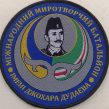
Under Two Flags: Chechen Fighters in Eastern Ukraine
Publication: Eurasia Daily Monitor Volume: 11 Issue: 164
By:

Persistent rumors have existed for some time about the involvement of Chechens in pro-Russian military groups fighting in eastern Ukraine (see EDM, July 18). A significant portion of the information about Chechens fighting in Ukraine was unverified; indeed, it sometimes seemed the Ukrainian army was fighting not the Russian army, but a Chechen army. A human rights-oriented website in Russia also spread misinformation that dozens of corpses of Chechens killed in Ukraine had arrived back in Chechnya. The website based the report on a random, unverified source in Chechnya (Kavkavsky Uzel, May 29), and it ultimately turned out to be based upon unsubstantiated reports spread by the Ukrainian media (echo.msk.ru, June 2). However, this did not mean that no Chechens were involved in fighting on the side of the pro-Russian forces and organizing provocations against Ukraine. While they were present, their input was considered to be so small that it could not have influenced the outcome of the fighting.
Meanwhile, there have been new reports of Chechen involvement on the Ukrainian side. Reports first surfaced in May 2014 (Twitter, August 16) that mentioned information about casualties (umma.ua, July 15) and injuries among pro-Ukraine Chechen fighters (fightforukraine.livejournal.com, August 3). Evidently some Chechen female combatants are also fighting in the ranks of the Ukrainian army against Russia (YouTube, September 8). Chechens living in Europe have formed a battalion under the command of the former general of independent Ichkeria, Isa Munaev (Facebook, September 12). The legal grounds for the involvement of Munaev’s unit in the Ukrainian conflict are unclear. It appears that after lengthy negotiations, it became part of a Ukrainian detachment, allowing it to participate in the fight against Russia without breaking Ukrainian laws.
A fresh influx of Chechens fighting on the side of the Russia-backed separatists also has recently appeared as well, and they no longer number only dozens of people, but include entire military units normally based in Chechnya, including two Motorized Rifle Brigades, one from the city of Shali and the other from the village of Borzoi (where the 17th Separate Guards Motorized Rifle Brigade is based). The Borzoi and Shali brigades are manned exclusively by contract soldiers, 10–20 percent of which are Chechens (gazeta.ru, February 25).
At the end of August, a video appeared on the Internet showing large quantities of military equipment being moved from Shali and Borzoi to the Russian military base at Khankala (outside Grozny), where it was to be loaded onto trains bound for Ukraine. Everyone shown in the videos said that the military cargo was being dispatched to Ukraine (YouTube, August 28). The voice-over on the video emphasized that the trains were headed to Ukraine and that the military convoys are quite long, extending for several kilometers. It should be noted that all the contract soldiers thought that they would be serving inside Chechnya, but their contracts imply they could be sent elsewhere in wartime. Hundreds of families in Chechnya thereby became hostages of these contract agreements.
After arriving in Ukraine at the end of August-beginning of September, the pro-Russian Chechens produced a large number of videos and posted them on the web. The videos indicate that their activities in Ukraine are far from peacemaking (YouTube, August 31). One video shows Chechen soldiers fighting in a field, while another shows combat in an urban environment (YouTube, August 23). Some of the videos show injured Chechens (YouTube, September 9). Chechens are now really being killed in Ukraine—a fact confirmed by the funerals that are taking place inside Chechnya. However, the Ukrainian authorities are completely out of touch and, having spread misinformation about dozens and even hundreds of Chechens being killed there in May–June 2014, they are now silent about the real deaths of Chechen casualties fighting for Moscow.
Another video shows Chechens who say they are serving in a unit called Oplot (Stronghold) but do not even know exactly what this unit is, so they agree to call it a special forces unit (YouTube, September 4). The video also implies that many Chechens were given new Kia cars to conduct operations in Ukraine. Another video displays an Infantry Fighting Vehicle (IFV) that was captured from the Ukrainian forces in the village of Novosvetlovskaya in the Luhansk region (YouTube, September 4).
The Chechens featured in these videos do not rage with anger against the Ukrainians or express scorn or make slurs. They seem to find their situation as something ordinary and normal. They all repeat Islamic slogans and express confidence that the Almighty is on their side and that they are right. If they are killed, they will see it as a death while conducting jihad. On another video, an unidentified officer orders others to launch a criminal investigation against Chechens and other North Caucasians who disobeyed his orders. He threatens to report the Chechens to Ramzan Kadyrov and the Dagestanis to Ramazan Abdulatipov (YouTube, August 29). The video appears to show what the real attitude of the Chechens to this war is and the level of animosity that Russian officers demonstrate toward their Chechen and Dagestani subordinates.
Thus, the Chechens again find themselves in a war, this time in Ukraine. Having participated in military conflicts in different parts of the world, the Chechens are becoming an increasingly militarized nation. This will hardly contribute to peace in Russia in the short or long term as these fighters eventually return home to share their experiences after gaining further combat experience in eastern Ukraine. And this will have serious repercussions for further Russian control of Chechnya.




